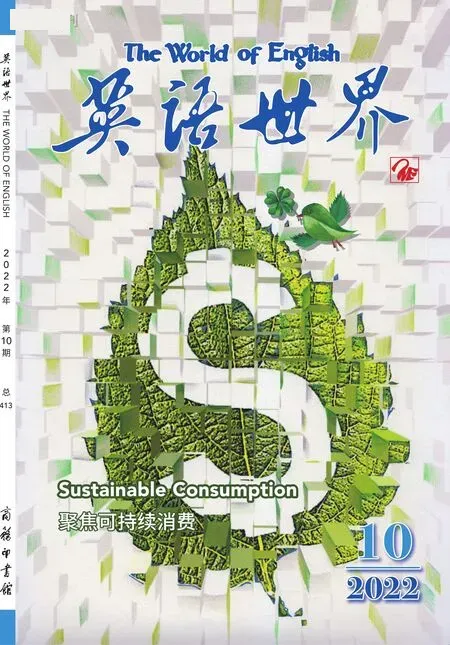可持续消费行为的“最后一英里”
文/迈克·德索西奥 译/王冰

扫码听读
目前,很难说可持续性仅是少数消费者感兴趣的事情。民调机构“环球扫描”的研究表明,世界各地绝大多数的消费者都认为我们需要减少消费。
2更重要的是,在该调查中,57%的消费者愿意为可持续产品多花钱。然而,其中仅有大约四分之一的消费者真的朝着可持续方向改变了自己的生活方式或消费行为。那么这是怎么回事呢?
3“当我们要求人们改变自身行为,使其更有可持续性时,可以发现十分明显的‘意向—行为差距’。”不列颠哥伦比亚大学市场营销与行为科学教授凯瑟琳·怀特说道。
4在2021 年度“绿色商务”会议上,怀特分享了她对可持续消费的研究。与会者还有来自亚马逊公司和宝洁公司的行业领袖,以及非营利组织的高管,他们分享了对可持续消费趋势的见解。以下是会议的三个要点:
1. 态度已转变,但行为滞后
5根据环球扫描的调查,整体而言,消费者对可持续产品的兴趣指数有所上升。例如,2020 年的调查结果表明,73%的消费者希望大幅减少他们对环境的影响,该数字比上一年增加了近十个百分点。
6会议期间,环球扫描首席执行官克里斯·库尔特将该现象描述为消费者态度的“显著转变”,认为这对可持续产品市场来说是个好兆头。但他马上强调了这一进展的不足之处。
7库尔特说:“我们求变的愿望和实际的行为之间仍然存在着差距,但我们确实看到世界各地正在发生重大变化。”
8怀特的行为科学研究探讨了什么样的手段最能有效说服消费者,使他们的消费选择符合自身对地球的关切。
9怀特说:“这对市场营销人员、机构组织和公共政策制定影者来说,是个十足的挑战。我们真的需要了解行为改变的关键驱动因素是什么。”
10怀特指出了利益相关者为改变行为可以关注的几个因素——社会影响(换句话说,同侪压力)、习惯养成、个人价值观、情感认同和有形成果。
11怀特表示,归根结底,任何人都不应指望一举采用所有措施来让消费者突然醒悟。改变更有可能是逐渐发生的。
2. 价格和性能依然是最重要的因素
12宝洁公司北美区织物护理研发部总监托德·克莱因正试图使消费者关注一个微小改变——用冷水洗衣服,这可以大幅降低其公司产品对气候的影响。
13克莱因表示,宝洁公司子品牌“汰渍”三分之二的碳足迹是消费者购买使用留下的。其中占比最大的是用于加热洗衣机中的水的能量。
14所以克莱因的计划很简单,他说:“制造出消费者用冷水洗衣时效果很好的产品。”
15这强调了关于可持续产品的一个基本事实:消费者最关心的仍然是产品性能和价格。因此,在展示对气候的诚意前,可持续产品必须先做好这两方面。
16亚马逊公司可持续购物全球负责人亚当·韦巴赫深知这一点。他主导开发了亚马逊平台上的“气候承诺友好型”标签,通过外部认证引导消费者购买最有可持续性的产品。
17结合迄今为止的经验,韦巴赫认识到,即使在亚马逊平台上具有生态意识的全食超市,消费者也会先考虑价格和性能,再考虑可持续性。
18但是“气候承诺友好型”标签可以让消费者快速而轻松地做出决定。
韦巴赫说:“消费者乐意有人帮他们减轻认知负担。”
3.( 信息量)少即是多
19亚马逊公司一个简单标签的成功,证明了促使消费者做出更可持续选择的另一重要策略:有时,更少的信息会有更好的效果。
20怀特认为,普通消费者没有时间、也没有兴趣去了解关于成分、生产或包装的全部细节。他们仅仅想知道自己的消费选择不会伤害地球。
21怀特说:“归根结底,如果做出可持续选择真的快速、简单、有趣且愉快,那我就会去做。”
22这就是标签能够起作用的地方。“绿色印章”组织首席执行官道格·加特林表示,他的公司一直致力于简化其可持续认证的推广方式。
他说:“向消费者传达各种各样的属性确实很困难。”
23因此,“绿色印章”组织并没有在一个标签上罗列20种或更多的声明,而是开发了一种“罗盘”,不仅标记出四大类别——水、废物、健康和气候,还可以作为对产品的简单评估。
24宝洁公司改进自己的产品包装和标签时,克莱因也牢记这一点。
他说:“如果我们能把可持续消费变得简单,变成令消费者感觉很棒的体验,那么他们就会采用这种行为并坚持下去。” □
These days, it’s hard to argue that sustainability is a niche1niche 小众(针对特定消费群体的市场需求)。consumer interest. A vast majority of consumers worldwide believe we need to consume less, according to research by Globe-Scan.
2More to the point, 57 percent of consumers in that survey were willing to pay more for sustainable products.But only about a quarter of them actually made any sustainable changes to their lifestyle or consumption. So what gives?
3“There’s this really marked intentionaction gap when we’re asking people to change their behaviors to be more sustainable,” said Katherine White, professor of marketing and behavioral science at the University of British Columbia.
4White shared her research on sustainable consumption during GreenBiz 21. She was among industry leaders from Amazon and Procter & Gamble,as well as nonprofit executives, who shared insights on the trends in sustainable consumption. Here are three takeaways2takeaway(讨论或会议的)要点。from the session:
1. Attitude has shifted, but behavior lags
5Across the board, indicators for consumer interest in sustainable products are up, according to the GlobeScan survey. The 2020 results, for example,showed that 73 percent of consumers wanted to reduce the impact they have on the environment by a large amount,up almost 10 percentage points from the year prior.
6During the session, Chris Coulter,CEO of GlobeScan, described it as a“remarkable shift” in consumer attitude that bodes well for the sustainable products market. But he was quick to underline the shortcomings of that progress.
7“There is still a gap between our desire to change and what we’re actually doing, but we do see significant movements happening across the world,” he said.
8White’s research in behavioral science looks into what levers3lever 施加影响力的手段。could be most effective in convincing consumers to align their choices with their concern for the planet.
9“This is a real challenge for marketers, for organizations, for public policymakers,” she said. “We really need to understand, what are the key drivers of behavior change in particular?”
10White identified a few factors that stakeholders can focus on to shift behavior—social influence (in other words, peer pressure), habit formation,individual values, emotional buy-in and tangible outcomes.
11But ultimately, no one should think about hitting consumers with all of those efforts at once, White said. The shifts are more likely to be gradual.
2. Price and performance are still king
12Todd Cline, as director for Procter& Gamble’s North America fabric care research and development, is trying to focus consumers on one tiny change that could drastically slash the climate impact of his company’s product: Wash their clothes in cold water.
13Cline said what consumers do with Tide, one of the company’s sub-brands,once they take it off the shelf accounts for two-thirds of the product’s carbon footprint. The biggest chunk of that is the energy used to heat the water in the washing machine.
14So his plan is simple: “Make products that work great when consumers use them on cold,” he said.
15This highlights a fundamental truth for sustainable products: Consumers’top concerns are still performance and price. So sustainable products must tick thosetwoboxesbefore showing off theirclimate bonafides4bona fides 诚意。.
16Adam Werbach, global lead for sustainable shopping at Amazon, knows this well. He led the development of a “Climate Pledge Friendly” label on the site that uses external certifications to direct customers to the most sustainable products.
17The experience so far has shown Werbach that customers, even at Amazon’s eco-conscious Whole Foods, primarily seek out price and performance before considering sustainability.
18But the “Climate Pledge Friendly”label can be a quick, easy way for them to make that decision.
“Customers like the cognitive load being taken off them,” he said.
3. Less (information) can be more
19The success of a simple label for Amazon speaks to another important tactic for nudging customers to more sustainable options: Sometimes less information is better.
20The average consumer, according to White, doesn’t have the time or interest to know all the details on ingredients,manufacturing or packaging. They just want to know it’s not going to harm the planet.
21“At the end of the day, if it’s really quick and easy and enjoyable and pleasant, I’m going to do it,” White said.
22That’s where labels can help. Doug Gatlin, CEO of Green Seal, said his company has worked to simplify the way it communicates its own sustainability certifications.
“It can really be difficult to communicate the various attributes to the consumer,” he said.
23So rather than listing 20 or more claims on one label, Green Seal developed a “compass” that identifies four main categories—water, waste, health and climate—and acts as a shorthand5shorthand 简约表达法。to evaluate products.
24Cline keeps this in mind, too, as Procter & Gamble refines its own packaging and labeling.
“If we can make it simple and make it so it’s a great experience for people,they’ll adopt the behavior and stick with it,” he said. ■

